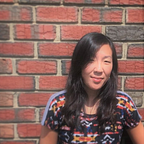Strands
What are genetics, exactly, when we are adopted?
 The first time I try to tell the future, I am 8 years old. I sit with friends around a table in the cafeteria and we make lists of the types of places we’ll live (mansion, apartment, shack) and the men we’ll marry (a who’s who of 90’s Hollywood heartthrobs) and the number of children we’ll have (zero never seems to be an option). We take turns drawing tally marks with our hand cupped around our pencil until the person whose fortune is being told yells stop. Then we count up each list, stopping on the number that matches the number of tally marks to cross off one future possibility at a time. When there’s one option remaining in each category, we are done; a life is displayed on the page.
The first time I try to tell the future, I am 8 years old. I sit with friends around a table in the cafeteria and we make lists of the types of places we’ll live (mansion, apartment, shack) and the men we’ll marry (a who’s who of 90’s Hollywood heartthrobs) and the number of children we’ll have (zero never seems to be an option). We take turns drawing tally marks with our hand cupped around our pencil until the person whose fortune is being told yells stop. Then we count up each list, stopping on the number that matches the number of tally marks to cross off one future possibility at a time. When there’s one option remaining in each category, we are done; a life is displayed on the page.
None of those predictions come true (though I suppose I do, in fact, live in an apartment, a fate I’m sure was foretold at least once in the dozens of times we played the game), and but I never stop searching for a way to tell the future.
In sixth grade biology, we are assigned to create a family tree. We are to write down traits of our predecessors and trace them through the generations, determining which of our own came from where.
When I tell my teacher I am adopted, she thinks for a moment before telling me I should just leave myself off the chart.
